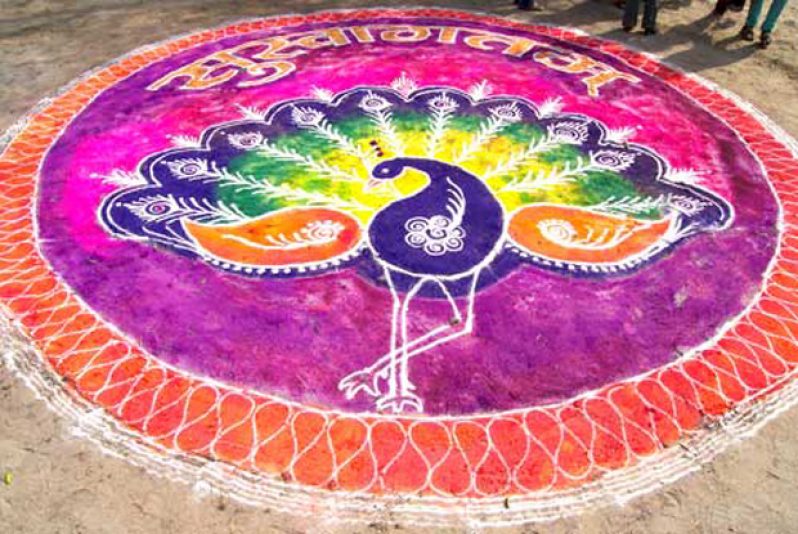Written By Michelle Gonsalves
TYPICALLY consisting of bright colours, rangoli is a decorative design made in living rooms and courtyard floors during Hindu festivals. The Hindu scriptures and puranas (Hindu mythological literature works) can be credited for the emergence of the art.
The Indian art is believed to have originated in the state Maharashtra, from whence it was gradually dispersed throughout the country, and is now present wherever the descendants of Indian immigrants live.
In Ancient times, they were made at the entrance of Indian homes for beautifying them and welcoming guests. Today, the Diwali festival features the greatest use of Rangoli.
Rangoli is a Sanskrit word, signifying a creative expression of art with the use of colours. Besides a creative expression, they were considered to be good luck.
The patterns have significance, and Ancient symbols have been passed down through the ages, from one generation to the next, keeping both the art form and tradition alive.
Patterns are typically created with such materials as rice, flour or sand, to which sindoor (vermilion), haldi (turmeric) and other natural pigmentation can be added. Chemical colours are a modern variation; they can also be done with flowers.
The purpose of rangoli is to be decorative; it is also thought to bring good luck. Design depictions may also vary, as they reflect traditions, folklore and practices that are unique to each area.
It is traditionally done by women. Generally, this practice is showcased during occasions such as festivals, auspicious observances, marriage celebrations and other similar milestones and gatherings.
Rangoli designs can be simple geometric shapes, deity impressions, or flower and petal shapes (appropriate for the given celebrations), but they can also be very elaborate designs crafted by numerous people. The base material is usually dry or wet granulated rice, or dry flour,
Key elements of Rangoli
Auspicious symbols are selected. Traditionally, each new generation learns the art, and thus a family keeps the tradition intact. Some major symbols used in Rangoli are the lotus flower, its leaves, mango, Tue vase, fish, different kinds of birds like parrots, swans, peacocks, and human figures and foliage.
Oftentimes, Rangolis are made on special occasions like Diwali. Some special patterns for Diwali Rangolis are the Deep, Ganesha or Lakshmi. The second key element is using the same material which is easily found everywhere. Therefore, this art is prevalent in all homes, rich or poor.
Background
According to the earliest treatise on painting, named Chitra Lakshana, a king and his kingdom were extremely grieved on the death of the high priest’s son. Everybody offered prayers to Lord Brahma. Brahma, being moved by the supplications, asked the king to paint a likeness of the dead boy on the floor. He then put life in the portrait, thereby relieving the kingdom of its sorrow and pain. This tale is considered the scriptural evidence of the creation of the beautiful art.
Creation of Rangoli
Rangoli can be made dry or wet. The rangoli made by adding points to ground in a particular size. After creating the desired shape, they are filled with colour. Freehand rangoli image is created directly on the ground.
‘Readymade rangoli’ stickers are also found in the market, which can make the drawing job easy. A newer trend of making rangoli involves using cement colours with marble powder. This is a rather precise method, but requires some previous training. Beautiful portraits can be drawn using this method.
Making a Rangoli
1. Sketch the design on paper with a pencil. Sketch lightly so that you can erase if needed. If you are working on the ground, you only need chalk.
2. Outline your design. Roll a piece of newspaper into a cone, and snip a hole in the narrow end. Fill the hole with flour or sand. Using your finger as a stopper with which to control the flow, outline your design.
3. Fill in your design. This is the most interesting step, and usually the most fun. You may fill in your design with a variety of products: Powdered paints mixed with Rangoli colour, sand or flour, Coloured rice, Flowers.
4. Add final touches like candles, clay pot-lanterns, etc. Use your creativity to the maximum.



.jpg)








